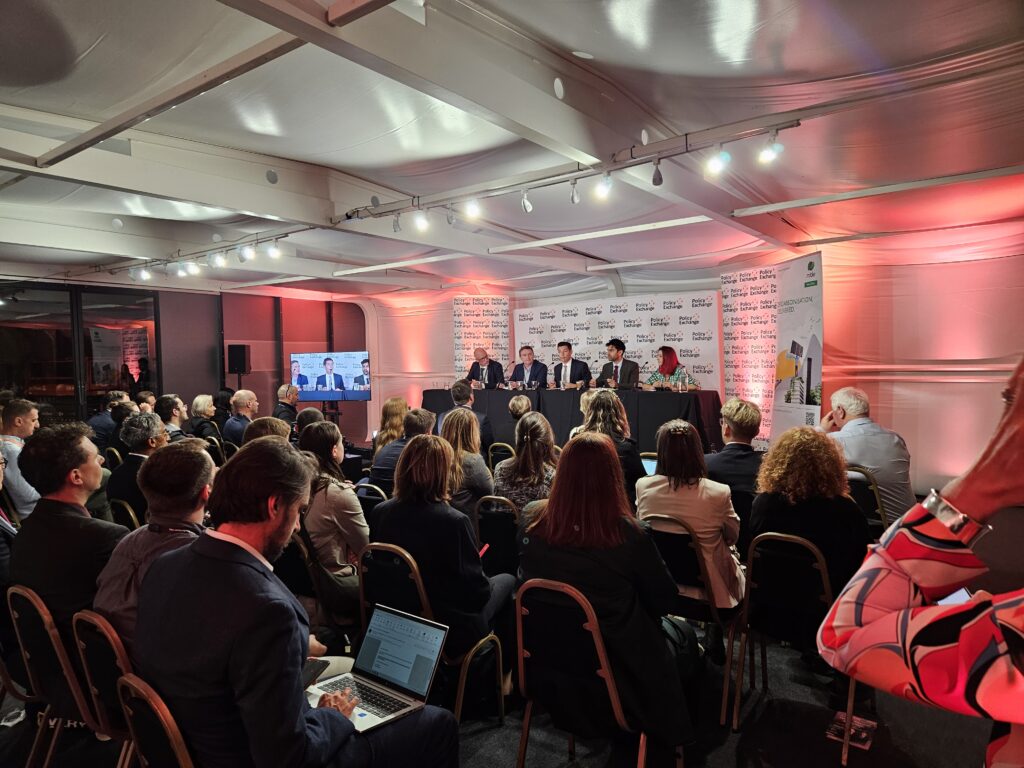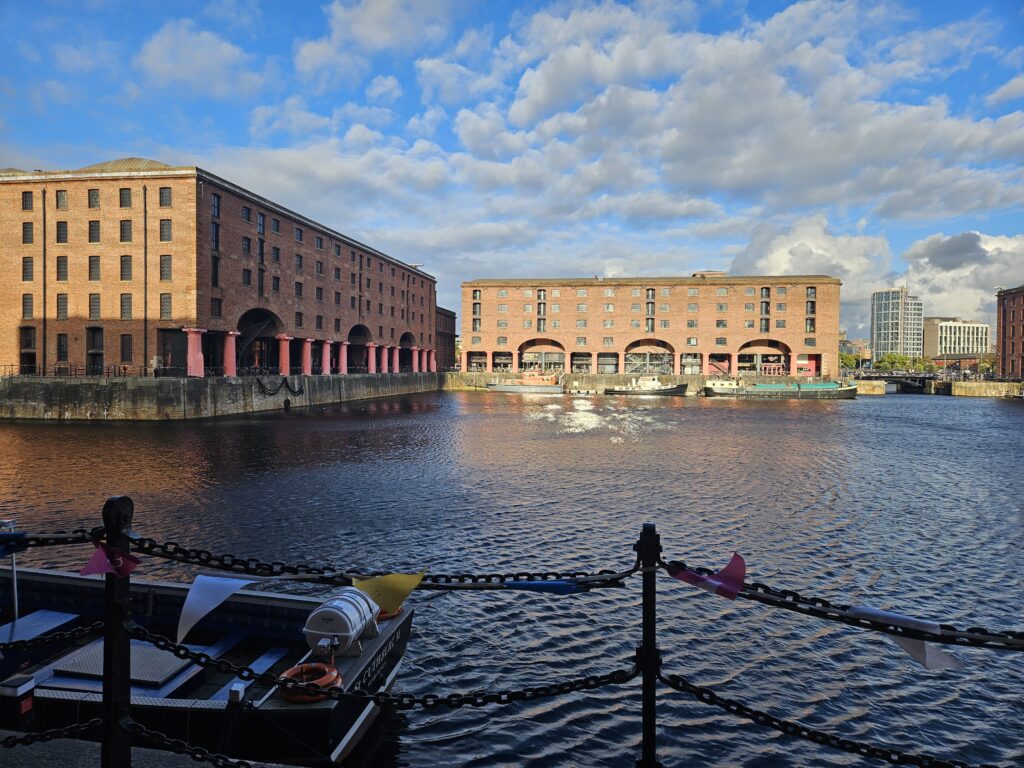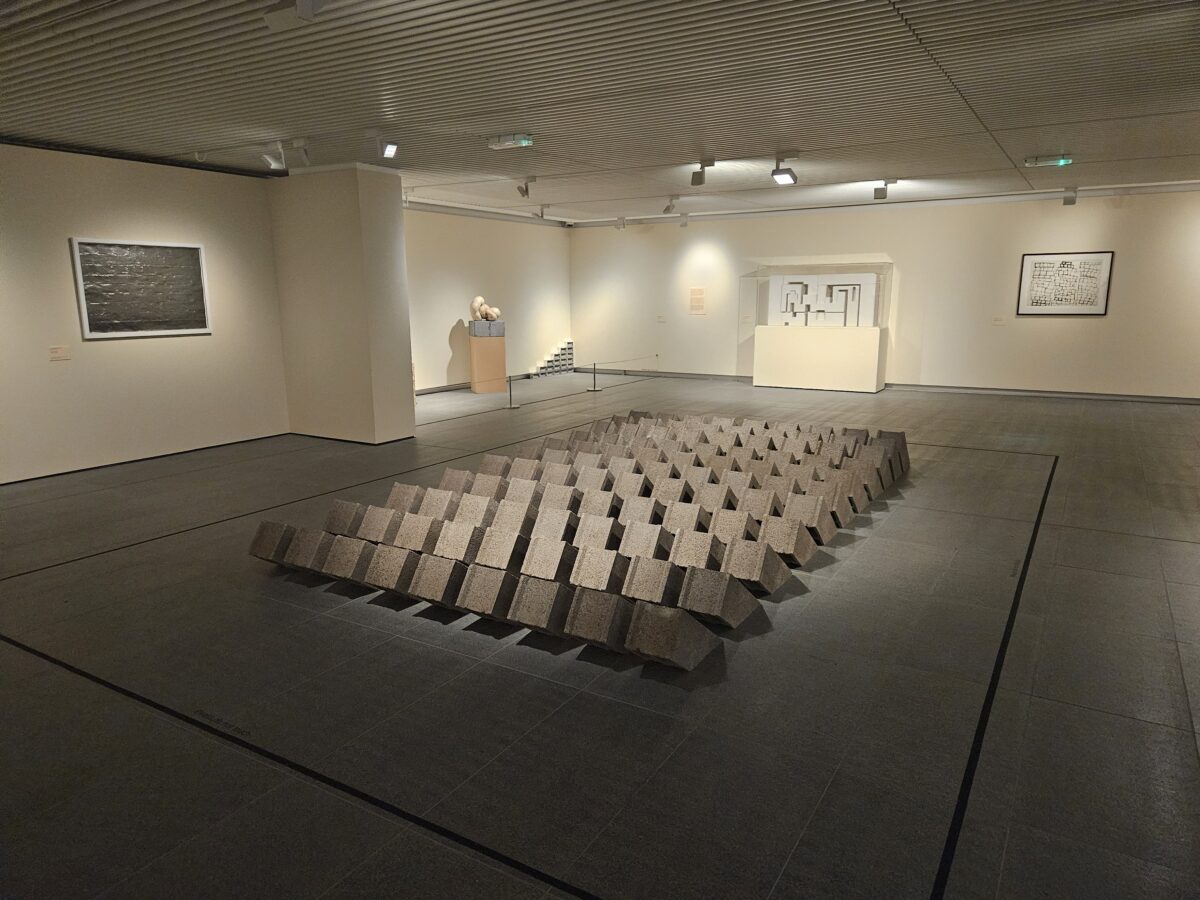Joseph Owen is a research fellow at the University of Southampton. He is also the specialist policy officer for the Faculty of Arts and Humanities. He is funded by the AHRC IAA.
In a still moment away from the Labour Conference, I notice that Tate Liverpool is closed for refurbishment. A slither of its collection has travelled to the RIBA North, a short walk along the Albert Dock from the main site. I walk the short walk. The small exhibition I find is titled Brickworks, which states the importance of bricks to the city’s industrial heritage, and more flamboyantly, claims to showcase “the transformative power of bricks in art.” The most startling work, Kader Attia’s Untitled (2008), dictates the centre of the room. It is a spotlighted installation comprising ten rows of concrete blocks, uniform and confrontational. These blocks illustrate the “dissolving” quality of the buildings they supposedly buttress, which weaken the identity and desires of the individuals who inhabit them.
And so, from that, I return to the cosmically vast and comically labyrinthine Arena and Convention Centre (ACC), hosting what should be Labour’s triumphant return to power. During the conference, I adopt several new habits: I dart chaotically from one place to another, I babble briskly with fellow attendees, and I spot junior ministers so habitually that I wonder if a) it’s a talent and b) it’s a talent that can be monetised.
In his leader’s speech, Keir Starmer talks about renewing the country: “brick by brick… a new home… built with pride.” Our ears prick up at this tenacious metaphor. The And Towns projects, assembled in the Southampton Institute for Arts and Humanities and recently furnished with an elegant new website, attended to the previous government’s mission to restore pride in place across the UK. Labour formally ditched the phrase levelling up without much ceremony, but twice it appears in Starmer’s speech, an ironic gesture that picks up the residual flotsam of political capital from that defeated agenda. We now watch eagerly how politicians might redeploy the language of pride in communities and regions, particularly in the context of Labour’s housebuilding reforms and the New Towns initiative.
Starmer’s speech is, generally, a hodgepodge. No conclusive thread. But there is a rhetorical emphasis on improving access to culture and the arts, specifically music. Starmer played the flute, he softly self-deprecates, asserting his passion for Brahms and Beethoven. These warm words disperse around the conference, so I attend an evening reception containing a Doncaster youth orchestra. My eyes dampen when a select number explain the band’s vital role: the expertise learned, the friendships developed and maintained. I dehumidify my sockets in time to advocate for the newly-awarded AHRC Music Hub, led by the Centre for Music Education and Social Justice, which pioneers novel methods for leadership and inclusion across the sector. This work happily dovetails with Labour’s manifesto commitment to launch a National Music Education Network.
The fringe events infinitely proliferate, with most tending to studious, agreeable discussions on net zero, artificial intelligence (AI), and Labour’s vast yet fragile electoral coalition. The University holds two lively and insightful conversations in The Purpose Coalition tent: one on decarbonisation, the other on population change. I am struck by the challenges of greening the housing stock. Most owner-occupiers insulating their homes face obstacles: retrofitting does not pay for itself, nor is it financially rational, and the supply chains have yet to mature. Oh dear.

At the very least, Ed Miliband’s influence has imbued the government’s net zero policy with a distinctive clarity of message. The nascent Centre for Green Maritime Innovation, with connections to Southampton Marine and Maritime Institute, is usefully positioned to help reduce some daunting port emissions. The role of AI, meanwhile, figures almost everywhere, its speedy evolution endorsed by the actor Andy Serkis. As the go-to hire for motion-capture roles in blockbuster films, Serkis believes that AI is a force for human creativity, cultural benefit and social good. Yet many workers in the creative industries might wonder how these technological advancements can lead to fair remuneration for artists. I am also sceptical.
As the newest Secretary of State for the Department for Culture, Media and Sport (DCMS), Lisa Nandy emerges as a reassuring feature across the programme. When not in discussion with Gary Neville about the promise of a football regulator, Nandy trumpets the value of local media, online safety and place identity. Andy Burnham, too, is a repeated presence, striding into rooms and delivering stump speeches. “Place first,” Burnham reiterates, encouraging University efforts to inaugurate a cultural policy network and trial tools for using qualitative data in local decision-making. Regional mayors are, otherwise, cast at the margins. Many of their chats take place outside of the secure zone (see: the venue) in sadly repurposed arts, cultural and heritage centres. I enjoy the meander, anyway.
A word on political factions. The left is neither united nor resurgent; the right, specifically the Labour First caucus, looks more relieved than galvanised in victory. The policy discussions—from Saturday through to Wednesday—are mostly polite, limited and uncontentious. But the real potency of politics awaits me on the steps each day as I enter the secure zone. There exists a patchwork of union members, Palestine protestors and pro-Europeans, all of whom provide a moral urgency that some might feel is lacking in the main hall. That’s government, I guess.
Yet Labour will be anxious to address the current fault-lines, illustrated not only by tensions within the party, but by uncertainties reflected in the wider country. This government is working out its story to tell. During the big speech, I watch Starmer formulate a set of British values into an unwieldy call for social cohesion: “We stand for not just the rule of law, but a love for this country and our neighbours. The respect for difference under the same flag. That is stronger than bricks and you know it.”
But do we know it? These assumptions about shared values and understandings must be tested against fresh research, empirical evidence and creative practice. Our mutual experience, then, requires endless adjustment: from the singular to the plural lies the complexity of being numerous. Very little in art, history or politics is fixed: the holy grail, data, a brief smear on the turning page. Firm ideas that we have about the material world are reliably challenged, and the foundations underpinning our lives remain beset by subjectivities. Even bricks and mortar contain multitudes, after all.




